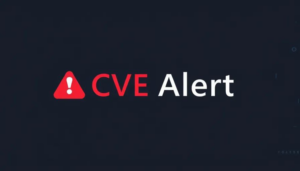CVE Alert: CVE-2025-52930 – SAIL Image Decoding Library – SAIL Image Decoding Library
CVE-2025-52930
A memory corruption vulnerability exists in the BMPv3 RLE Decoding functionality of the SAIL Image Decoding Library v0.9.8. When decompressing the image data from a specially crafted .bmp file, a heap-based buffer overflow can occur which allows for remote code execution. An attacker will need to convince the library to read a file to trigger this vulnerability.
AI Summary Analysis
Risk verdict
High risk: a PoC exists for remote code execution via the BMP decoding path, with network exposure and required user interaction.
Why this matters
The vulnerability allows heap-based corruption leading to total compromise of confidentiality, integrity and availability. In practice, an attacker could deliver a crafted BMP to trigger code execution on a host decoding images, enabling takeovers, data exfiltration or service disruption.
Most likely attack path
An attacker would lure or deliver a crafted BMP to a network-facing image processing component, prompting the library to decode the image. The heap overflow is triggered during decoding, requiring no privileges but necessitating user interaction or file handling within the app. Once code execution is obtained, lateral movement or broader host compromise is feasible if image decoding is integrated into privileged services.
Who is most exposed
Systems embedding the image decoding library for BMP processing—such as image pipelines, content upload services, web servers handling user-supplied images, or enterprise imaging/document workflows—are most at risk. Deployments that perform image decoding in untrusted contexts compound exposure.
Detection ideas
- Crashes, crash dumps, or heap-corruption errors in the BMP decoding routine.
- Unusual memory growth or use-after-free patterns in image processing processes.
- Execution of unexpected code paths following receipt of BMP payloads.
- Logs showing BMPv3 RLE decoding activity tied to remote input.
- Signs of exploitation attempts in network services handling image uploads.
Mitigation and prioritisation
- Apply vendor patch or upgrade to fixed version as soon as available.
- If patch is unavailable, disable or isolate BMP decoding for untrusted inputs; enable strict input validation and content whitelisting.
- Sandbox image decoding processes; run with least-privilege; segment network-facing image services.
- Deploy compensating controls: WAF filters for crafted BMPs, enhanced EDR/telemetry for memory anomalies, and focused anomaly detection on image-processing queues.
- Change-management: test in a staging environment before rollout; prioritise due to PoC presence and high impact.
A considerable amount of time and effort goes into maintaining this website, creating backend automation and creating new features and content for you to make actionable intelligence decisions. Everyone that supports the site helps enable new functionality.
If you like the site, please support us on “Patreon” or “Buy Me A Coffee” using the buttons below
To keep up to date follow us on the below channels.



![Cobalt Strike Beacon Detected - 119[.]45[.]29[.]172:8089 4 Cobalt-Strike](https://www.redpacketsecurity.com/wp-content/uploads/2021/11/Cobalt-Strike-300x201.jpg)
